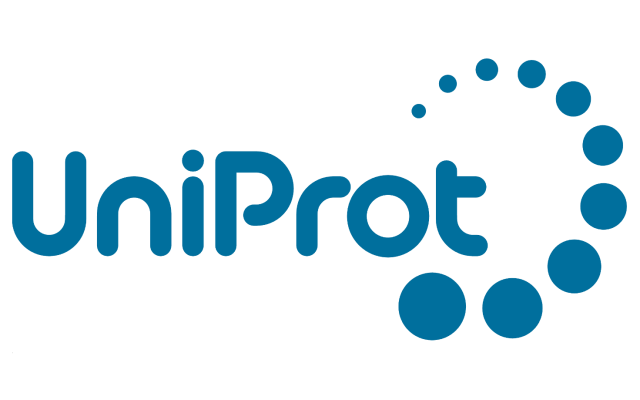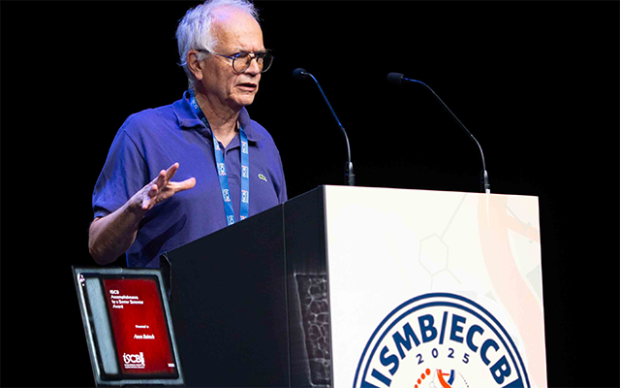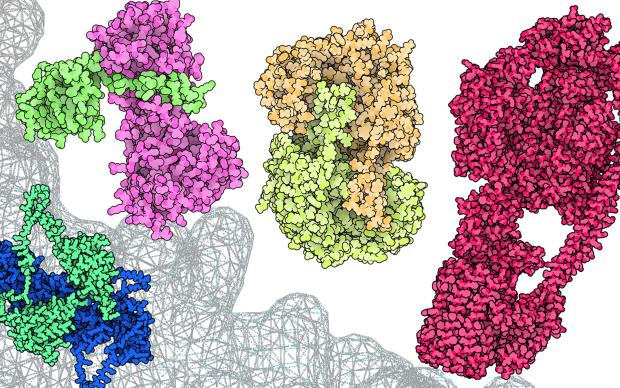Academic and private researchers using UniProt, a unique and high-quality knowledgebase for proteins co-developed by SIB, benefit from efficiency gains worth a combined €373-565 million each year. This is an impressive return on investment compared to annual operational costs of €14.6 million. UniProt also generates long-term socioeconomic benefits, as shown by its mention in over 15,200 scientific publications and more than 183,000 patent publications to date. This value is particularly important to Switzerland, with three of the top five patent filing organizations being global Swiss companies or subsidiaries. These findings are published today in a case study led by CSIL in collaboration with ELIXIR, in the framework of the EU-funded PathOS project to better understand and measure open science impacts.
UniProt is the world’s leading source of high-quality, comprehensive, and freely accessible information on protein sequence and function. A collaboration between SIB, the European Bioinformatics Institute (EMBL-EBI), and the Protein Information Resource (PIR), it comprises a suite of databases that include the expertly curated UniProtKB/Swiss-Prot maintained by SIB.
UniProt is recognized for its fundamental importance to the wider life-science community and long-term preservation of data as a SIB Resource, ELIXIR Core Data Resource, and Global Core Biodata Resource. It was chosen for the cost-benefit analysis by ELIXIR, which leads a case study on open bioinformatics resources for the PathOS project.
Quantifying the benefits and value of open science
Open sharing of data and knowledge is increasingly recognized as essential for accelerating scientific progress, fostering innovation, and strengthening public trust in science. While evidence for these positive outcomes has been collected, a common method for systematically measuring academic and socioeconomic impacts is lacking.
UniProt is the world’s leading source of high-quality, comprehensive, and freely accessible information on protein sequence and function. A collaboration between SIB, the European Bioinformatics Institute (EMBL-EBI), and the Protein Information Resource (PIR), it comprises a suite of databases that include the expertly curated UniProtKB/Swiss-Prot maintained by SIB.
UniProt is recognized for its fundamental importance to the wider life-science community and long-term preservation of data as a SIB Resource, ELIXIR Core Data Resource, and Global Core Biodata Resource. It was chosen for the cost-benefit analysis by ELIXIR, which leads a case study on open bioinformatics resources for the PathOS project.
A new framework specifically tailored for measuring the benefits and impacts of open science practices is filling this gap, with UniProt, a globally recognized essential open data resource for life science, as a first case study. Through an adapted cost-benefit analysis and ‘impact pathway’ assessment, the study finds that UniProt provides:
efficiency gains to academic and private sector users worth €373-565 million per year,with a significant proportion of this benefit coming from expert data curation by SIB’s Geneva-based Swiss-Prot group;
a direct net benefit that exceeds its operational costs of €14.6 million by a factor of between 25 and 39 to one;
long-term value for science and society by accelerating new knowledge and innovations, facilitating collaborations between universities and the private sector, and generating new entrepreneurial ideas;
strong value for Switzerland, with global Swiss companies or subsidiaries comprising three of the top five organizations publishing patents mentioning UniProt.
The analysis provides UniProt’s funders – the Swiss State Secretariat for Education, Research and Innovation (SERI), European Molecular Biology Laboratory (EMBL), and the US National Institutes of Health (NIH) – with concrete evidence on the return of their investments. It also provides a compelling argument for sustainable funding of open data resources generally, including others provided by SIB and the European life sciences data infrastructure ELIXIR. The overall framework – which was developed by CSIL, an economic research institute, for the PathOS project of Horizon Europe – additionally provides a powerful decision-making tool to drive policies for open science.
UniProt’s immediate benefits far exceed its costs
The adapted cost-benefit analysis performed by CSIL for the case study specifically assesses short-term outcomes that are directly attributable to UniProt. The average annual operational cost was calculated as €14.6 million between 2017-2023, comprising running costs covered by the three funders and other sources plus user contributions to improve protein data.
User benefits were identified by a survey, and primarily consisted of time saved in three areas:
freely accessing UniProt’s open data and knowledge versus negotiating access to restricted or proprietary alternatives (transaction cost savings);
directly accessing integrated information in UniProt versus separately accessing different sources (access cost savings);
streamlined daily work versus needing to integrate, interpret, and verify data from other sources (labour cost savings).
The combined monetary value of this time saved was estimated as between €373 million and €565 million per year. While the analysis could not include all historical costs associated with UniProt’s development – such as initial investments, expansion efforts, and major upgrades – and does not reflect long-term and indirect benefits (discussed below), this value exceeds the resource’s current operational costs by a factor of between 25 (lower estimate) and 39 (upper estimate) to one.
Data curation and management provide most user benefits
Interviews and focus groups revealed that user time savings are mostly attributable to the ongoing efforts of scientists employed by SIB, EMBL-EBI, and PIR to improve data accessibility, enhance data interoperability, and expertly curate protein sequences in Swiss-Prot with information from the scientific literature on protein structure and function.
The labour cost of this data curation and management accounts for most of UniProt’s operational costs. But as highlighted in the study, this work – particularly expert data curation by SIB’s Swiss-Prot group – cannot be accomplished by other existing organizations nor replaced by AI technologies. Indeed, the user survey failed to identify a fully comparable alternative to UniProt, with:
74% of respondents reporting they would not have access to the same data from restricted or closed resources;
68% reporting they would not be able recreate the same data.
Top five organizations filing patents mentioning UniProt
Genentech – 960 (US; subsidiary of F. Hoffmann-La Roche)
F. Hoffmann-La Roche – 948 (Swiss)
Novozymes – 705 (Danish)
Institut National de la Santé et de la Recherche Medicale – 589 (French)
Novartis – 574 (Swiss)
UniProt provides long-term value to science and society
Quantification of long-term impacts through scientific literature and patent analyses showed that UniProt additionally contributes to:
Top five organizations filing patents mentioning UniProt
Genentech – 960 (US; subsidiary of F. Hoffmann-La Roche)
F. Hoffmann-La Roche – 948 (Swiss)
Novozymes – 705 (Danish)
Institut National de la Santé et de la Recherche Medicale – 589 (French)
Novartis – 574 (Swiss)
new knowledge, with mentions in over 15,200 scientific publications across a large variety of life science and technology fields – with 31% of these publications directly related to the United Nations Sustainable Development Goals (SDGs);
R&D and innovation including in Switzerland, with mentions in over 183,000 patent publications – with three of the top five filing organizations being global Swiss companies or subsidiaries – plus mentions of patents citing UniProt in further downstream patents.
User surveys and interviews identified further long-term effects enabled by UniProt, including public-private collaborations, product and service development, and enhanced production processes.
See how UniProt data trained the first Nobel-winning AI model
Need for sustainable funding of research infrastructure
Overall, the case study supports the scientific and societal value of open science policies – to which Switzerland, the EU, other European countries, and the US have committed. It also demonstrates the role of research infrastructure, of which UniProt is a part, in supporting open science as well as wider economic, health, and environmental policies.
Such evidence is more crucial than ever: despite a large proportion of core global biodata resources being from SIB, EMBL-EBI, and other European and American institutions, funding for research infrastructure remains an ongoing issue in their respective countries. SIB and all other providers of high-quality data resources and strategic data activities require sustainable funding to meet ever-growing demands for accelerated research, innovation, and solutions to global issues.
Discover how SIB develops world-class, open biodata resources
See more on data infrastructure as a strategic resource













